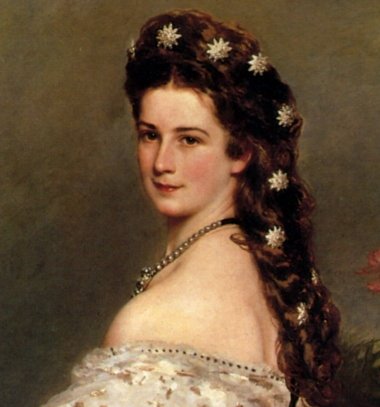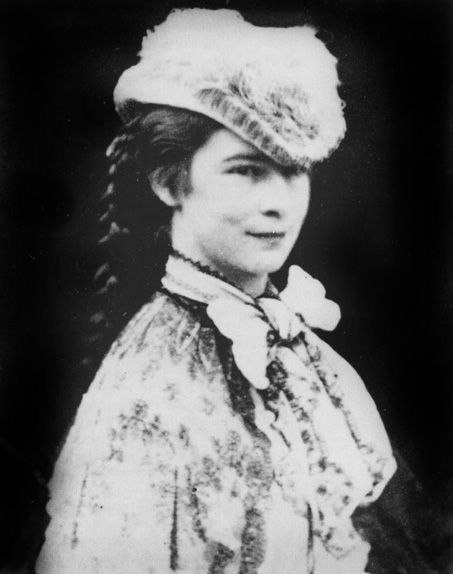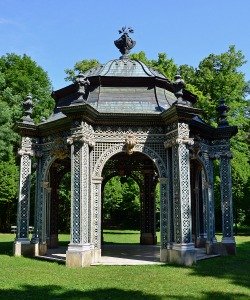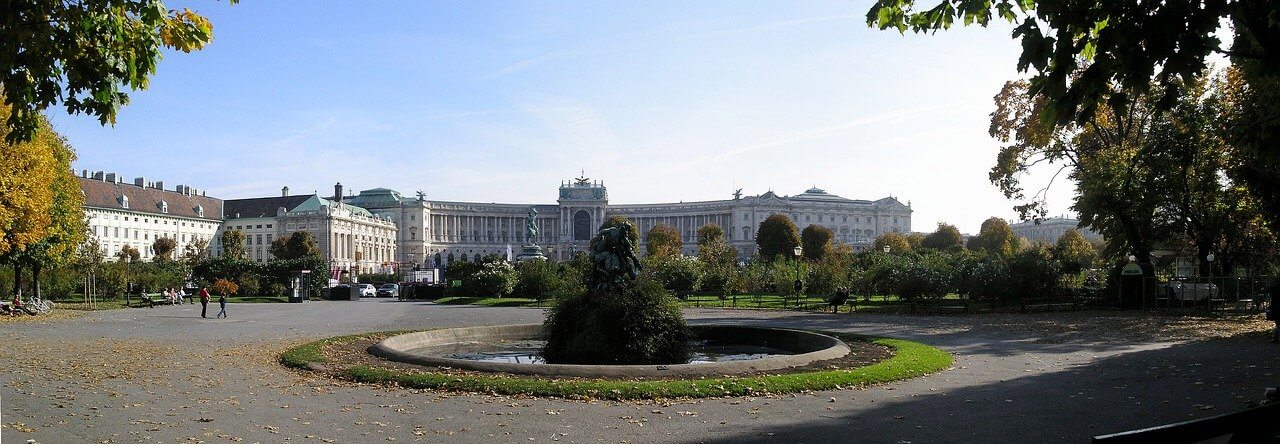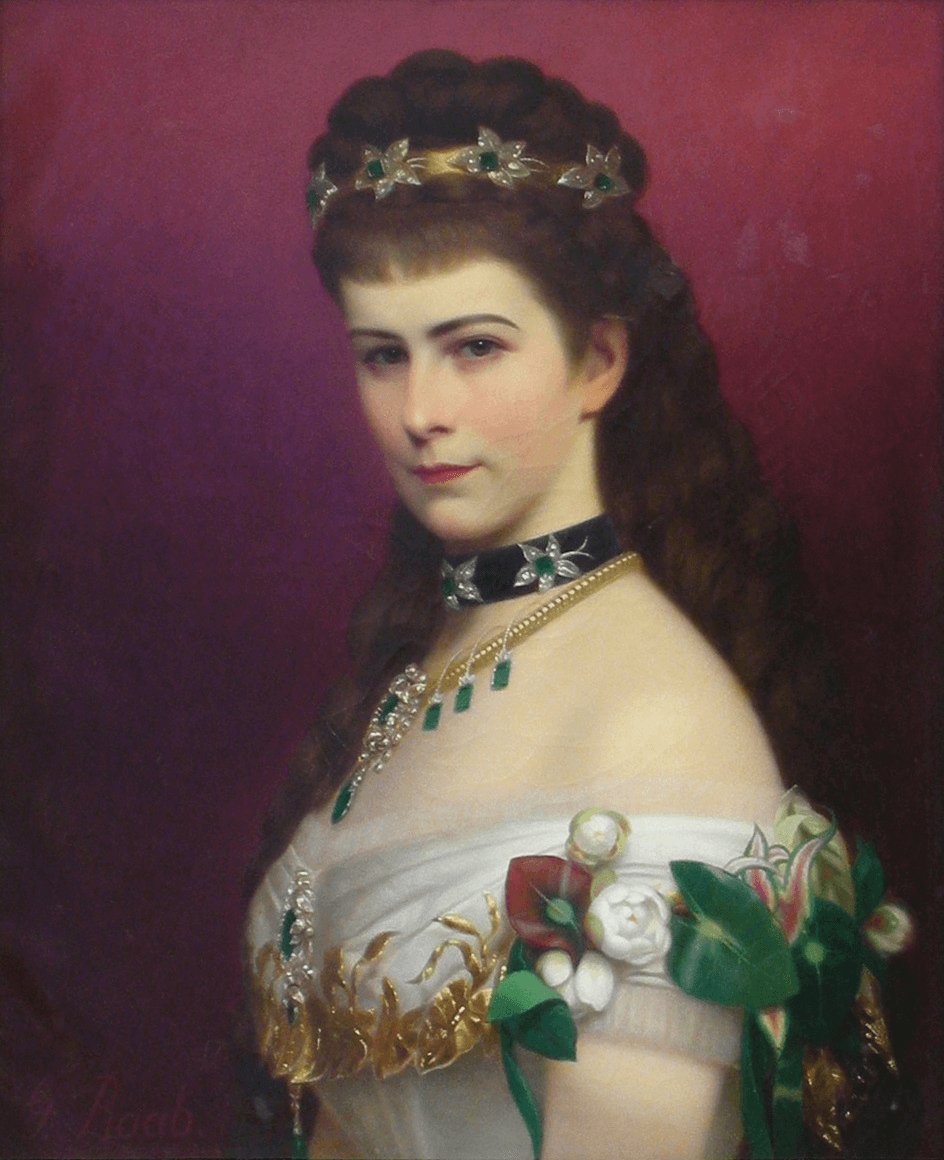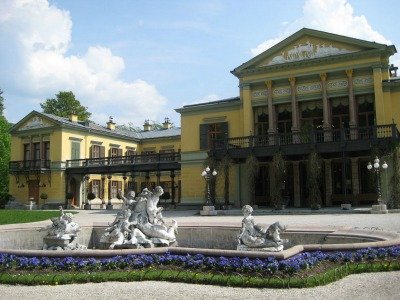Franz Joseph 1 of Austria
The Complicated Emperor of the Habsburg Dynasty
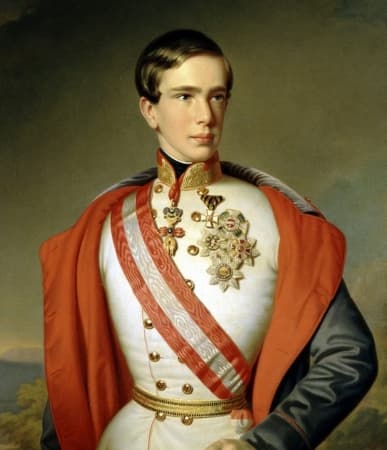 Franz Joseph in 1851, aged 20
Franz Joseph in 1851, aged 20Who was Franz Joseph 1 of Austria? A mama's boy, a prince charming or a brutal dictator? Or perhaps a bit of all three?
If you’re binge-watching "The Empress" on Netflix, you’re probably knee-deep in the tales of grandeur, power, and love hemmed in the glorious days of the Habsburg Dynasty.
You’ve definitely also seen the Sisi trilogy from the days of yore, played by the divine Romy Schneider, but what about the guy keeping her on her toes? No royal story is complete without a counterpart, right?
Let's talk about her other half. Who is Franz Joseph I of Austria?
DISCLOSURE: I get commissions for purchases made through some of the links in this article.
Franz Joseph, the Boy Emperor
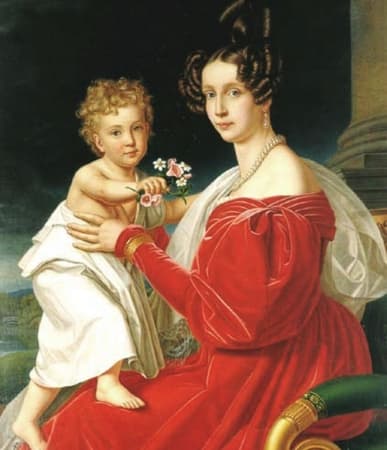 Archduchess Sophie and her son, the future emperor Franz Joseph
Archduchess Sophie and her son, the future emperor Franz JosephIn the Sissi Trilogy from the 50's Karlheinz Bohm makes Franz Joseph look like a romantic softie, always smiling and attentive to his mother and his favourite girl Sisi.
In the Netflix serie 'the Empress', and in the recently released movies Sisi & I (2023) and Corsage (2022) we see another guy altogether. Franz Joseph is moody and blunt, old fashioned and frustrated. I was kind of in shock, and realised I knew little about Emperor Franz Joseph of Austria. It seems that the emperor was a complex and intriguing character, fumbling, succeeding, and failing across his eventful life.
Franz Joseph, son of Archduke Franz Karl of Austria and Princess Sophie of Bavaria, was born August 18, 1830, in Schönbrunn Palace, Vienna, Austria. He was a teenager when he ascended the throne on October 2, 1848, thanks to the abdication of his uncle Ferdinand I. He was barely old enough for his first shave and already had the entire Austro-Hungarian Empire on his shoulder. Talk about a crash course in adulting!
Franz had his mother to thank for that. Sophie's husband, Archduke Franz Karl, was the second in line to the throne after his elder brother, Ferdinand I. However, Ferdinand was mentally unstable, and it became clear that he was unfit to rule. In 1848, the revolutions that swept across Europe reached Austria, and Ferdinand was forced to abdicate. He had no children.
Sophie persuaded Franz Karl to step aside in favor of their eldest son, Franz Joseph. Sophie argued that Franz Joseph was young and energetic, and that he was the best person to lead the Habsburg Empire through the challenges of the 19th century. And so it happened that Franz Joseph became emperor at age 18, with his mother pulling the strings.
Emperor franz joseph and elizabeth
Archduchess Sophie “the only man at the Hofburg Palace" as she was commonly referred to, registrated almost everything for her son. An excellent education stressing on military training and Catholic piety, a throne, a lady to teach him on the practices needed to produce an heir, and a future wife to make these heirs with. The wife she had choosen was Helene, one of the daughters of her sister, so Franz Josephs' cousin.
It must have been a great shock for Sophie when she found out that Franz Joseph did not listen to her in this very important matter.His marriage to Duchess Elisabeth of Bavaria, known as Sisi, on April 24, 1849, was not what she had planned for him.
When he met his cousins Helene and Sisi, he fell head over heals for the latter. It took him only two days to ask her to marry him!
His marriage to Elizabeth, also known as Sisi, brought some much-needed sparkle to his otherwise gloomy existence. Their love story was the stuff of legends, an Elizabethan era Romeo and Juliet — complete with petticoats and powdered wigs. Their love story, primarily a political alliance, adds a different dimension to the otherwise stern figure of Franz Joseph.
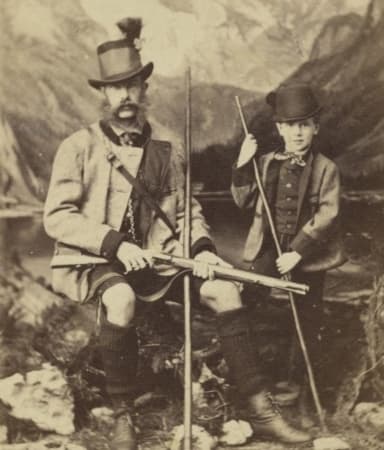 Emperor Franz Joseph with his only son Rudolf, Crown Prince of Austria.
Emperor Franz Joseph with his only son Rudolf, Crown Prince of Austria.Did Sisi love Franz? The 15 year old girl must have been impressed by the atletic young emperor when they met. Especially when he dit not have those ridiculous side burns yet.
They did not have a fairy-tale marriage. Their differences were glaring. Sisi, all about adventure and exploration, and our good emperor Franz Joseph, married to tradition. While he was doggedly dedicated to his duties, Elizabeth was free-spirited, intellectual, and overburdened by her life at court.
After their marriage, Emperor Franz Joseph and his rebellious wife, Empress Elisabeth, welcomed their first child, a daughter named Sophie, on March 5, 1853. Tragedy struck quickly, however, as Sophie died just two years later while the family was traveling to Hungary.
In the midst of their grief, the royal couple welcomed another daughter, Gisela, on July 12, 1856. Their long-awaited crown prince, Rudolf, was born on August 21, 1858, and their youngest child, Marie Valerie, was born on May 22, 1868.
However, the demands of royal life clashed with Sisi's desire for freedom, and she began to travel extensively across Europe, avoiding the strict protocols of the court.
Franz Joseph's Secret Affairs: Anna Nahowski and Katharina Schratt
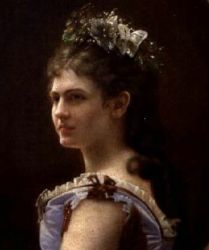 Katharina Schratt, mistress to Franz Joseph of Austria
Katharina Schratt, mistress to Franz Joseph of AustriaWhen Sisi often went swanning off, our dear emperor found solace in the arms of other women. Starting in 1875, he kindled an affair with Anna Nahowski that lasted till 1889. In 1875, Franz Joseph was 45 years old and Anna Nahowski was 15 years old. This means that Franz Joseph was 30 years older than Anna! Oh, the scandal! it is generally accepted that they had a long-term sexual relationship, and there is some evidence to suggest that she may have been the mother of two of his children.
Sisi probably did not (officially) know about this affair. She did however know about the next one, because she initiated it herself.
Franz was introduced to Katharina Schratt in 1889, and this relationship continued right up until his death in 1916. Franz Joseph's relationship with Katharina Schratt was more open, and she was a frequent visitor to the Hofburg Palace. She was a popular actress and singer, and Franz Joseph reportedly enjoyed her company very much. Schratt remained a close friend and confidante of Franz Joseph until his death.
For more reading about Franz Joseph 1 of Austria, you can click on one of the titles below:
As an Amazon Associate I earn from qualifying purchases.
- Emperor Francis Joseph: Life, Death And the Fall of the Habsburg Empire by John Van der Kiste: This biography delves deep into the life of Franz Joseph, exploring his personal life, political decisions, and the events that led to the collapse of the Habsburg Empire.
- Twilight of the Habsburgs: The Life and Times of Emperor Francis Joseph by Alan Warwick Palmer: This book paints a broader picture of Franz Joseph's reign, placing it within the context of the tumultuous historical period he presided over, including the decline of the Habsburg dynasty.
- Franz Joseph I: An Illustrated Life of an Emperor by Juliana Weitlaner: This richly illustrated biography offers a visually engaging look at Franz Joseph's life, featuring photographs, paintings, and other historical artifacts.
- The Fall of an Eagle: The Tragic Reign of Franz Joseph and the Rise and Fall of the Habsburg Empire by Frederic Morton: This book takes a more critical look at Franz Joseph's reign, highlighting his shortcomings and the factors that contributed to the Habsburg Empire's decline.
-
The Hapsburg Monarchy 1867-1918: A History of the Austrian Half of the Dual Monarchy
by Arthur J. May: This book provides a wider historical context for Franz Joseph's reign, focusing specifically on the Austrian half of the Habsburg Empire during its final decades.
- The Emperor and the Actress: Love Story of Emperor Franz Josef and Katharina Schratt by Joan Haslip (English Edition) This book offers a factual account of the relationship between Emperor Franz Joseph I of Austria and the renowned actress Katharina Schratt. It delves into the development of their unique bond, exploring the emotional solace and companionship they found in each other amidst the complexities of Franz Joseph's reign.
Franz Joseph 1 of Austria: A Life Marked by Tragedy and Change
While his personal life was more of a daytime soap opera, Franz Joseph’s royal tenure was characterized by turbulent socio-political changes.
Franz Joseph's rule was marked by some hefty military conflicts, like the Crimean War (1853-1856), the Austro-Prussian War (1866) and World War I (1914-1918). February 17, 1867 was a landmark date in his rule with the establishment of the Dual Monarchy between Austria and Hungary.
The Hungarian Revolution of 1848-1849 was a watershed moment in Austro-Hungarian history. It was a rebellion against the Habsburg monarchy, which had ruled Hungary for centuries. The revolutionaries sought to establish an independent Hungarian republic, but they were ultimately defeated by the Austrian army.
The Hungarian Revolution forced the Habsburg monarchy to recognize the desire of the Hungarian people for self-government. The Compromise of 1867 was a way for the monarchy to maintain its hold on Hungary while also giving the Hungarians some of the autonomy they desired. It was a compromise that worked for over 50 years, but it was ultimately unable to survive the challenges of the 20th century.
Despite his flaws and struggles, Emperor Franz Joseph 1 of Austria was deeply loved by his people. They respected him for his dogged determination to uphold tradition and his stubborn perseverance in the face of adversity. Turns out wielding power and keeping your people happy is a delicate balancing act!
Major personal tragedies follow Franz Joseph througouth his life.
- His brother, Maximilian was executed by a firing squad in Mexico in 1867.
- His only son and heir, Rudolf commits suicide on January 30 1889, with his mistress, Mary Vetsera.
- On September 10, 1898, the dagger of fate fell again when Empress Sisi was assassinated in Geneva, Switzerland, at the age of 60.
- Fast forward to 1914, Archduke Franz Ferdinand gets assassinated in Sarajevo on June 28, sparking World War I.
what happened to franz joseph after sisi died?
Following Elisabeth's assassination, Franz Joseph retreated into a deep sense of grief. He never remarried and lived alone for another 18 years after his wife's death, Luckily, he found solace in the company of Katharina Schratt. Their relationship, while not officially recognized, was deeply intimate and provided Franz Joseph with much-needed companionship and emotional support.
She visited him regularly, they wrote long letters to each other, and they shared many moments together.
Schratt remained a constant presence in Franz Joseph's life until his death in 1916.
How did Franz Joseph die?
After an impressive rule, rough around the edges but full of diamonds, Franz Joseph died of pneumonia on November 21, 1916. Much of his relatives suffered a violant death, he died quitly at home in the Hofburg, at the resepctibale age of 86.
His reign, lasting 68 years, remains one of the longest tenures of any European monarch in history. Only Louis XIV of France,Johann II of Liechtenstein and recently deceased Queen Elisabeth II sticked around longer.
Despite his flaws and poor choices (I mean, who hasn’t made a few?), Emperor Franz Joseph was a man of the times, steeped in both tradition and complicated romance. And boy, he commanded immense respect from his people. They really dug his unshakeable determination, stubborn perseverance in the face of adversity, and his ability to pull off those fabulous moiré silk uniforms!
Franz Joseph I of Austria is buried in the Imperial Crypt (Kaisergruft), in Vienna, Austria. The Imperial Crypt is the final resting place of 149 members of the House of Habsburg, including 12 emperors and 18 empresses. Franz Joseph is buried in a sarcophagus in the center of the crypt, surrounded by his wife, Empress Elisabeth, and his son, Crown Prince Rudolf.
The Imperial Crypt is a popular tourist destination, and it is open to the public for tours. You can find information and buy tickets by clicking here.
Franz Joseph was succeeded by his grandnephew, Emperor Charles I, because he had no direct heirs. His only son, Rudolf, had committed suicide in 1889, and his younger brother, Maximilian, had been executed in Mexico in 1867.
Franz Joseph's grandnephew, Charles, was the son of his younger brother, Archduke Karl Ludwig. Karl Ludwig died in 1896, before Franz Joseph. This made Charles the heir presumptive to the throne.
When Franz Joseph 1 of Austria died in 1916, Charles became Emperor Charles I of Austria and King Charles IV of Hungary. However, his reign was short-lived. Austria-Hungary was defeated in World War I, and the empire was dissolved in 1918. Charles was forced to abdicate, and he went into exile with his family.
Charles I died in exile in 1922 at the age of 34. He was the last emperor of Austria-Hungary.
